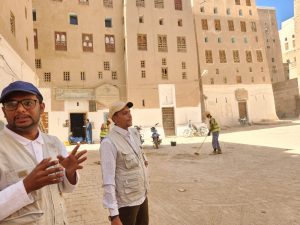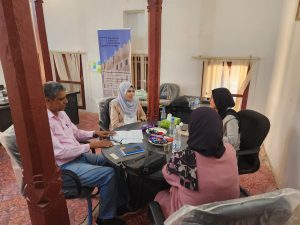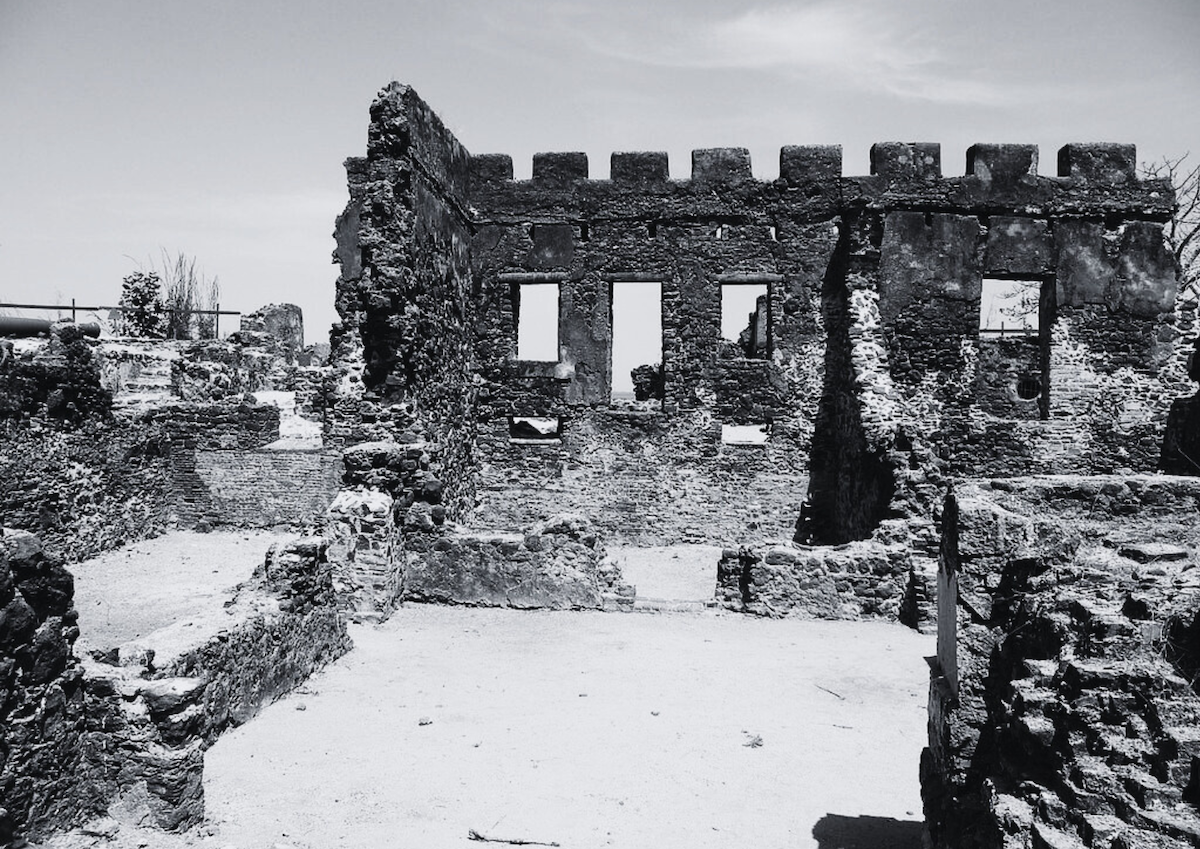Tag Archives: preservation
Preserving Shibam’s Heritage: A New Museum Takes Shape
A major step was taken in early February to safeguard the rich cultural heritage of the city of Shibam in Yemen, in the framework of the Preserving the Unique Earthen Architecture of Shibam project, funded by the ALIPH Foundation, is implemented by The Heritage Management Organization (HERITΛGE) in partnership with the American Foundation for Cultural Research (AFCR) and the General Organization for the Preservation of Historic Cities in Yemen (GOPHCY – Shibam).
Museum experts Shatha Safi and Khulod Najjar visited Shibam to guide the community-led design and planning of a brand new museum to be created by the project.
Old City of Shibam: a World Heritage Site
The walled City of Shibam is one of the oldest examples of urban planning based on the principle of vertical construction with impressive tower-like structures Following years of crisis brought about the war in Yemen, compounded by and the impact of climate change, this unique UNESCO World Heritage Site is facing significant challenges.
The proposed museum project addresses a request from the General Organization for the Preservation of Historic Cities in Yemen (GOPHCY) to create a centralized space that will bring together collections currently dispersed across several venues in the city. In addition to exhibiting Shibam’s history and artifacts, the museum will feature spaces dedicated to traditional arts and crafts, fostering cultural preservation and engagement. Furthermore, a dedicated room equipped with video-conferencing facilities will enable local residents to participate in online training and conferences. To ensure the sustainability of this training venue, the project will install solar panels and an internet connection, providing continuous access to digital resources.
The experts’ visit marked a crucial phase in the project; three key meetings were held to align the museum’s vision with community expectations and institutional support.
The first meeting focused on establishing a framework for the creation and operation of the museum. It brought together Hassan Aideed– Director General of GOPHCY – Shibam, the Local Committee for Museum Preparation, Hedaya Ghraibeh, Project Manager for HERITΛGE with the two visiting experts. Discussions revolved around how the museum can authentically represent Shibam’s history, traditions, and way of life while aligning with the aspirations of the local community. The experts emphasized the importance of preserving both the material culture—such as architectural heritage—and the stories, customs, and knowledge passed down through generations.
The second meeting allowed the project team, the visiting experts, and GOPHCY-Shibam to discuss the museum with Tariq Falhum, Director General of Shibam District and his team. This discussion highlighted the role of local authorities in supporting the museum’s development and ensuring its long-term sustainability. By integrating the museum into the broader heritage conservation strategy for Shibam, the project aims to strengthen both cultural preservation and community engagement.
The third meeting was held in coordination with the Women’s Development Administration at the District Office. This session brought together 15 women and girls from diverse backgrounds, including home-based workers, recent graduates, shopkeepers, and others, to discuss the evolution of traditional practices and contemporary lifestyles in Shibam. The conversation explored the challenges faced by women and the transformation of their position in society over time, providing valuable insights into the social and cultural shifts within the community.This meeting plays a vital role in ensuring that the museum accurately represents the experiences, voices, and contributions of women to Shibam’s heritage and daily life.
As the planning and design process continues, Shibam is moving closer to having a dedicated space that tells its story and brings the local community together.
The project provides practical, on-the-job training for heritage professionals in Shibam, ensuring that conservation efforts are sustained by skilled local experts. Currently, four trainees are already working alongside our architects and engineers on the documentation process for the South Palace, where the museum will be located.
The Preserving the Unique Earthen Architecture of Shibam project also includes architectural and infrastructure assessments in the first year, along with an in-depth study on climate action, proposing sustainable strategies for both Shibam and Wadi to ensure long-term resilience and preservation.
The significance of Kunta Kinteh island and related sites
By Ebrima Jammeh*
The Gambia is the smallest country on mainland Africa, with a population of about 2 million people. It is often referred to as the smiling coast of Africa due to the friendly nature of its people. It is surrounded on all three sides by Senegal (North, South, and East) except the West, which is occupied by the Atlantic Ocean, and is divided into two halves (North and South) by the River Gambia (a freshwater river).
Having gained independence from the British in 1965, it became a Republic in 1970 under the Leadership of President Dawda Kairaba Jawara.
Kunta Kinteh Island and Related Sites: Outstanding Universal Value
Kunta Kinteh Island, formerly known as James Island, and its related sites, are a testimony to the encounter between Africa and Europe along the River Gambia, a period stretching from pre-colonial and pre-slavery times to independence. The site is particularly significant for its relation to both the beginning of the slave trade and its abolition and also documents early access to the interior of Africa.
Kunta Kinteh is a small island in the Gambia River which flows out into the Atlantic Ocean. The island’s location made it a strategic place to control the waterway. Visited by explorers and merchants in their search for a sea route to India, it became one of the first cultural exchange zones between Africa and Europe. By 1456 the Island had been acquired by Portugal from local rulers and the construction of a fort began. Kunta Kinteh Island and Related Sites form an exceptional testimony to the different facets and phases of the African-European encounter, from the 15th to the 19th centuries. The River Gambia was particularly important forming the first trade route to the inland of Africa. The site was already a contact point with Arabs and Phoenicians before the arrival of the Portuguese in the 15th century. The region forms a cultural landscape, where the historic elements are retained in their cultural and natural context. The properties illustrate all the main periods and facets of the various stages of the African-European encounter from its earliest moments in the 15th Century through the independence period.
The main focus of the Kunta Kinteh Island site was the control of the hinterland and its riches rather than control of the coast and the trade that passed along it.
The specific location of Kunta Kinteh Island and its Related Sites, at the mouth of the Gambia River, is a tangible reminder of the story of the development of the Gambia River as one of the most important waterways for trade of all kinds from the interior to the Coast and beyond. The specific, important role of the site in the slave trade, both in its propagation and its conclusion, makes Kunta Kinteh Island and its Related Sites an outstanding memory of this important, although painful, period of human history.
The property includes Kunta Kinteh Island Fort and a series of sites associated with the early European occupation of the African continent. The ensemble has seven separate locations: the whole of Kunta Kinteh Island, the remains of a Portuguese Chapeland of a colonial warehouse (CFAO Building) in the village of Albreda, the Maurel Frères Building in the village of Juffureh, the remains of the small Portuguese settlement of San Domingo, as well as Fort Bullen and the Six-Gun Battery. Fort Bullen and the Six-Gun Battery are at the mouth of the Gambia River, whilst Kunta Kinteh Island and the other sites are some 30 km upstream.
The development of Kunta Kinteh Island differed greatly from that of the many other forts, castles, and trading posts found in other parts of West Africa in that the main focus of the Kunta Kinteh Island site was the control of the hinterland and its riches rather than control of the coast and the trade that passed along it.
The Six-Gun Battery (1816) and Fort Bullen (1826), located on both sides of the mouth of the River Gambia came much later than Kunta Kinteh Island and were built with the specific intent of thwarting the trade in slaves once it had become illegal in the British Empire after the passing of the Abolition Act in 1807. They are the only known defensive structures in the region to have been built specifically to stop slaving interests. The other fortifications of the region (including Kunta Kinteh Island), were constructed as a means of enhancing and controlling the trade in slaves (and commodities) rather than stopping it. These two military positions allowed the British to take full control of the River Gambia, eventually paving the way for the establishment of the colonial government, a period well-illustrated by many colonial buildings in Banjul and the Governor’s Rest House at Fort Bullen. Finally, Fort Bullen shows evidence of its re-use during the Second World War (1939-1945) as a strategic observatory and artillery post. This later period illustrates yet another European rivalry that spread to the African continent.
The Six-Gun Battery (1816) and Fort Bullen are the only known defensive structures in the region to have been built specifically to stop slaving interests.
Site Significance
Criterion (iii): Kunta Kinteh Island and related sites on the River Gambia provide an exceptional testimony to the different facets of the African-European encounter, from the 15th to 20th centuries. The river formed the first trade route to the inland of Africa, being also related to the slave trade.
Criterion (vi): Kunta Kinteh Island and related sites, the villages, remains of European settlements, the forts and the batteries were directly and tangibly associated with the beginning and the conclusion of the slave trade, retaining its memory related to the African Diaspora.
Integrity: The six parts of the serial nomination together present a testimony to the main periods and facets of the Afro-European encounter along the River Gambia, a continuum that stretched from pre-colonial and pre-slavery times to the period of independence and in particular to the beginning and the abolition of the slave trade, as well as documenting the functions of the early access route to the inland of Africa. The six sites encompass all the key remains.
All the sites except the CFAO and Maurel Frères Buildings are ruins. The CFAO Building has been restored and provided with adequate sea defense. The Maurel Frères Building was restored in 1996 and is in a good state of conservation. The Portuguese chapel and San Domingo are in a state of ruins, but these have been stabilized, with the most endangered parts reinforced in 2000.
The isolated position of Kunta Kinteh Island in the river has conserved its setting to the present day. Fort Bullen is also bordered by the river on one side and a large open tract of land on the other, naturally serving as a buffer zone and helping to preserve its setting. It is in a relatively good state of conservation, though the wall on the seaward side is suffering from sea erosion. Parts have collapsed and 20 metres were rebuilt in 2000. The Six-Gun Battery is in a good state of conservation. The ruined sites need ongoing maintenance if they are not to deteriorate over time.
Authenticity: Kunta Kinteh Island Fort was subjected to destruction on numerous occasions. Since the last time by the French, in 1779, it has remained a ruin with only minor attempts at consolidation and minimizing the effects of sea erosion. The Island is a landmark for all concerned with the slave trade, especially the local community and Africans in the Diaspora. Apart from a short period of re-use during the Second World War. Fort Bullen and the Six-Gun Battery were similarly abandoned in the late 19th century. At San Domingo, there are very few visible remains but the area has considerable potential for archaeological research. The ruins that convey the Outstanding Universal Value are extremely vulnerable to erosion. At the time of inscription to the UNESCO World Heritage List, the ruined sites were seen to be part of a wider cultural landscape that needed protection to protect the setting of the sites and to allow them to be understood.
Protection and management requirements
Kunta Kinteh Island, Fort Bullen and all the significant historic buildings in the Albreda-Juffureh complex are legally protected as National Monuments (1995) under the National Council for Arts and Culture Act, 1989 (revised 2003). The proclamation instrument also establishes a buffer zone for all the sites that should be kept free of incompatible developments with adverse effects on their setting. As National Monuments the historic structures are under the custodianship of the National Centre for Arts and Culture (NCAC) who are responsible for their conservation and upkeep. Day-to-day management rests with the Directorate of Cultural Heritage of the NCAC, which employs a Destination Manager, Showroom attendant, site attendants and caretakers. The Six-Gun Battery is located within the State House grounds and is protected by the Office of the President. The sites also have a 5-year management plan that sets out what is acceptable at the individual site and at the national level. This plan was prepared as a result of the joint effort of ten different national and local organizations, supported by the Africa 2009 program.
The funding used for the management and maintenance of the sites is relatively limited and comes mainly from entrance fees. Every three months, the Head of the Museums and Monuments section of the NCAC performs a physical inspection of the sites. This conditional assessment is carried out with a representative of the local stakeholders and, if possible, with a local guide. A brief report is prepared after each visit and these are summarized in an annual report.
To the visitors, the property has symbolic and emotional significance, as a visit to Kunta Kinteh Island is a pilgrimage to their roots. As a piece of historical evidence, much can be learnt from the Island, and it already forms part of the history and social studies syllabus in Gambian schools.
The property contains very fragile ruins that need to be protected and conserved as the tangible elements that convey Outstanding Universal Value. There needs to be ongoing maintenance, monitoring, and conservation to allow these ruins to have the best chance of survival and be robust enough to withstand the onslaughts of nature.
Challenges Include:
- Inadequate funding to ensure constant preservation
- Climate change factors such as erosion sea level rise, weathering
- Treasure hunting
- Inadequate capacity building among the staff
Strengths: The local community is being engaged at all levels while The Gambia has in place an effective and efficient legal framework in the management system. The site’s staff is a committed team that is receiving training in heritage management from the NCAC’s partner organization, HERITΛGE, through its HerMaP Gambia program, co-funded by the European Union.
PARTNERS
The National Centre for Arts and Culture partners with the following:
HERITΛGE through its HerMaP Gambia program that is co-funded by the European Union.
UNESCO
NATCOM
Coalition of Sites of Conscience
African World Heritage Fund (AWHF)
Gambia Tourism Board (GT BOARD)
Gambia Tourism and Hospitality Institute (GTHI)
*Ebrima Jammeh is Destination Manager for The Gambia’s National Centre for Arts and Culture (NCAC). This work was first presented at the 5th World Heritage Site Managers Forum that took place earlier this year in Saudi Arabia.





